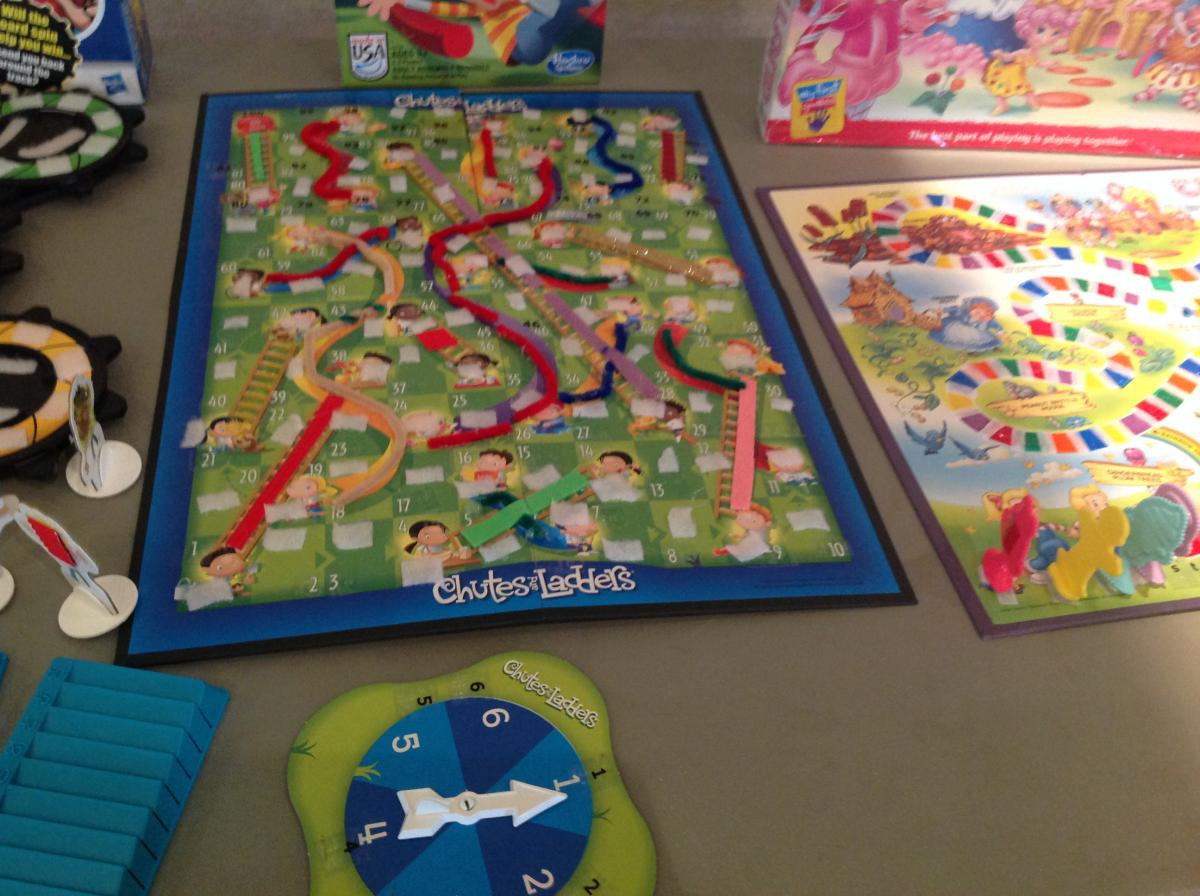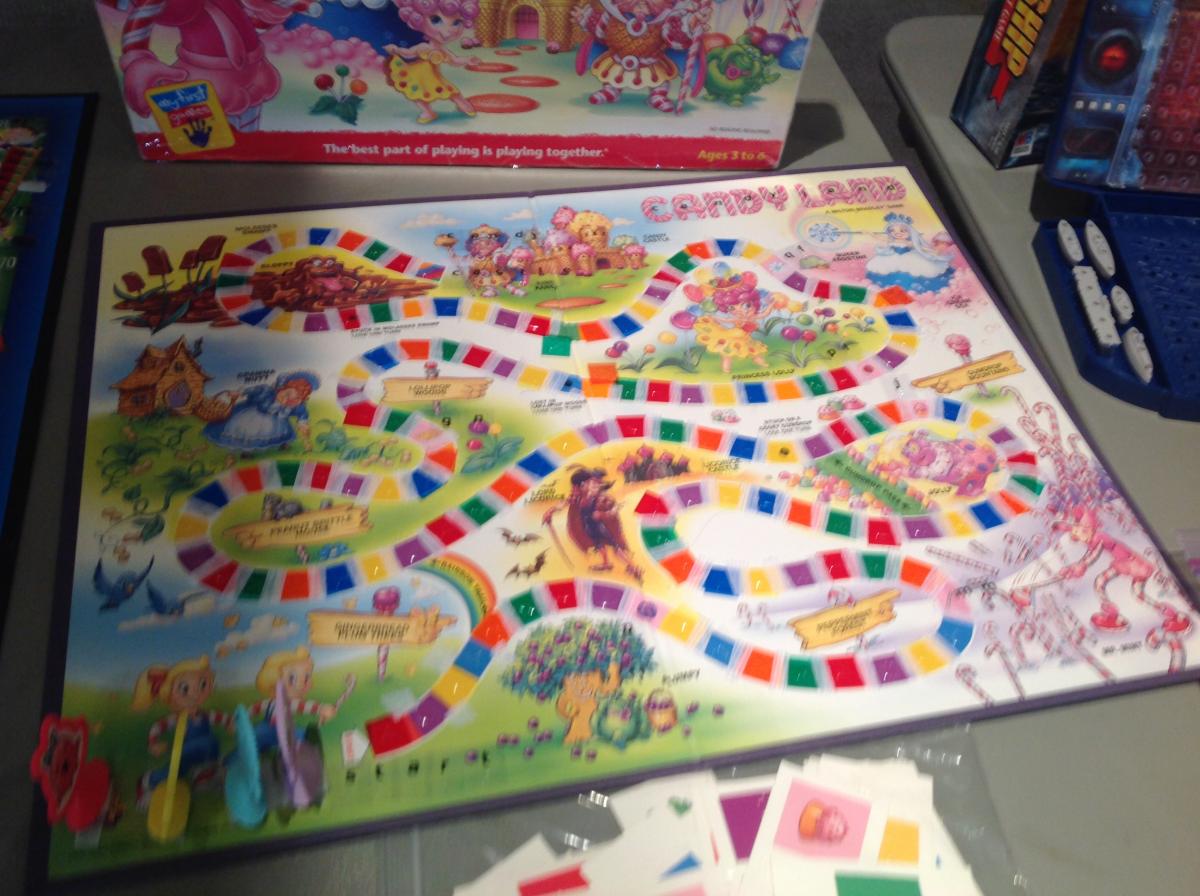As a person with a vision impairment myself, I love to play games. It is hard for me if the game involves speed or is small, but that is not what gave me the idea to start adapting games for my students with vision impairments. I hope the ideas I share here will help parents and teachers get their creative juices flowing with ways to make commercially-made games accessible for our students.
My Story
The story begins last fall in my elementary school classroom. We had the game Sorry; my students with low vision could play it easily, but I had one student who could not participate. My wheels started turning: how could I make this accessible so she could play the game with her peers? What materials should I use?
One day I was looking at Paths to Literacy, and saw how Liam’s mom had adapted Candy Land. That is when inspiration struck! Liam’s mom used small wood shapes glued on the different pieces, braille on the board and cards, and Velcro so the pieces wouldn’t move around as he felt the board. Using her idea as my springboard, I started adapting Sorry.
Games
The first thing I did was go through the classroom materials. I decided I could use APH’s (American Printing House) Carousel of Textures. In other games, I used alphabet and number stickers, and tactile shapes—all from APH. I also used the braillewriter and common classroom objects.
Procedure
- Cut out different colored paper from the Carousel of Textures, ideally keeping the colors the same (e.g. red textured paper on red pieces on the board). Make sure each one is tactually different from the others.
- Use hot glue or super glue to glue textures to the game board.
- Put Velcro on each space, including Start, Safe Zone, and Home (or whatever is relevant to a specific game). Make sure these are labeled with the color and corresponding name.
- To adapt the pieces, you can go to any thrift store and change out the pieces so each color has their own unique piece. Another option is to use common classroom objects, such as paper clips, straws, pipe cleaners, etc.
- Braille each card. Because braille takes up so much more space, summarize what the player needs to do, or make your own cards.
Other Games
Using these strategies, I went on to adapt other games. I used these ideas to adapt my own Candy Land, Chutes and Ladders, and Monopoly Junior. I have also done some card games including Uno, Skipbo, Racko, and Apples to Apples Junior.
Battleship
Battleship is a great game to teach children how to graph coordinates. How can a teacher or parent make this game accessible for children with vision impairments? Well, we found a way. My husband adapted this game. He used hot glue to mark all of the red “hit” pieces, and left the white ones blank. Along the top and left side of the board, he placed the braille numbers and letters. Because the space is small, all the extra stickers except the braille had to be cut off. My younger students who are new to graphing absolutely loved this game!

Conclusion
The sky is the limit on how we can make board games accessible to children with visual impairments. Students can learn a host of skills related to both the Common Core curriculum and the Expanded Core Curriculum when playing games. My students learned how to take turns, be a good sport if they lose, practice various math and reading skills, and most importantly, they had fun!
If there are any questions about how these games were adapted, feel free to email me at katiec@usdb.org!








